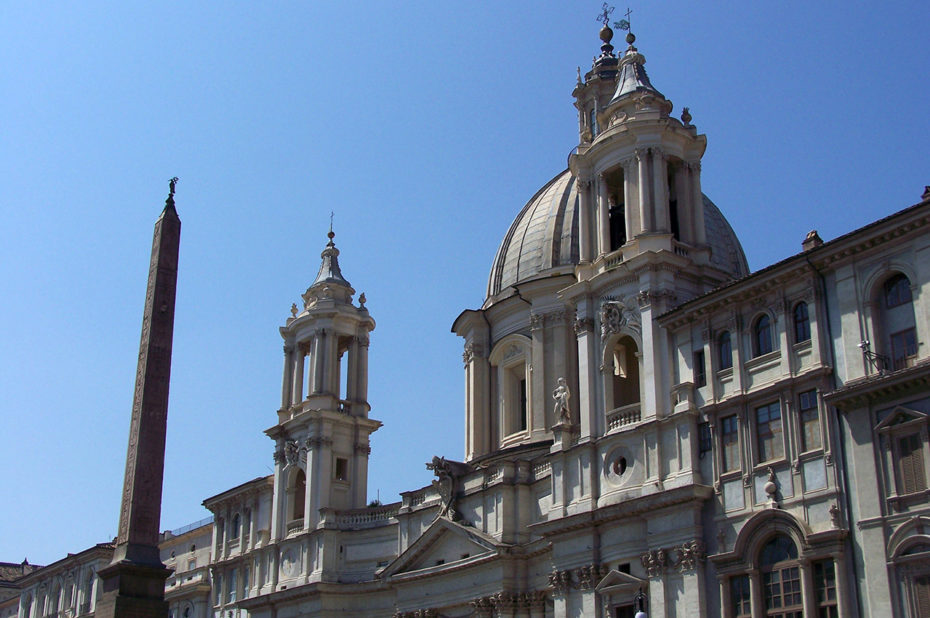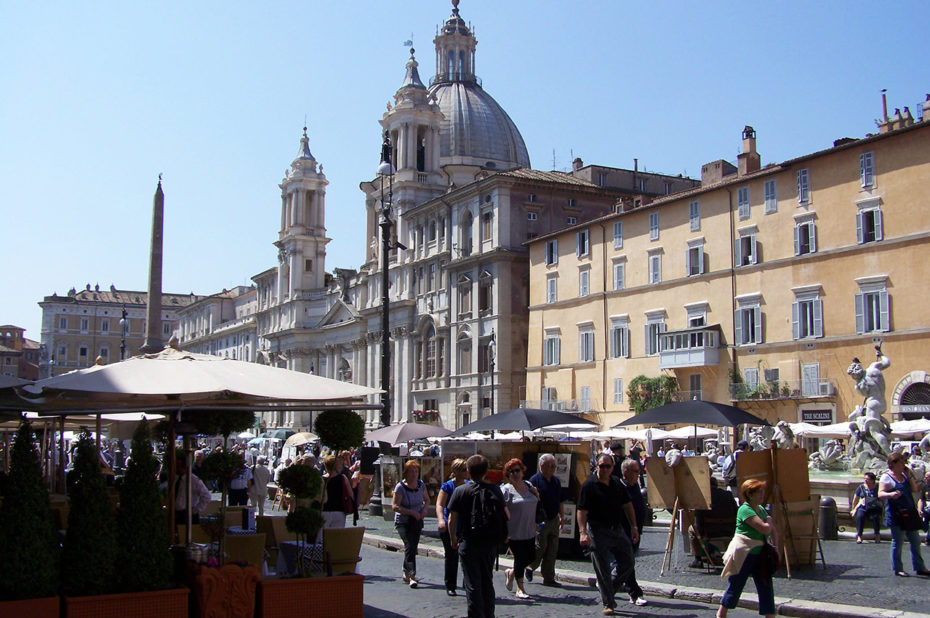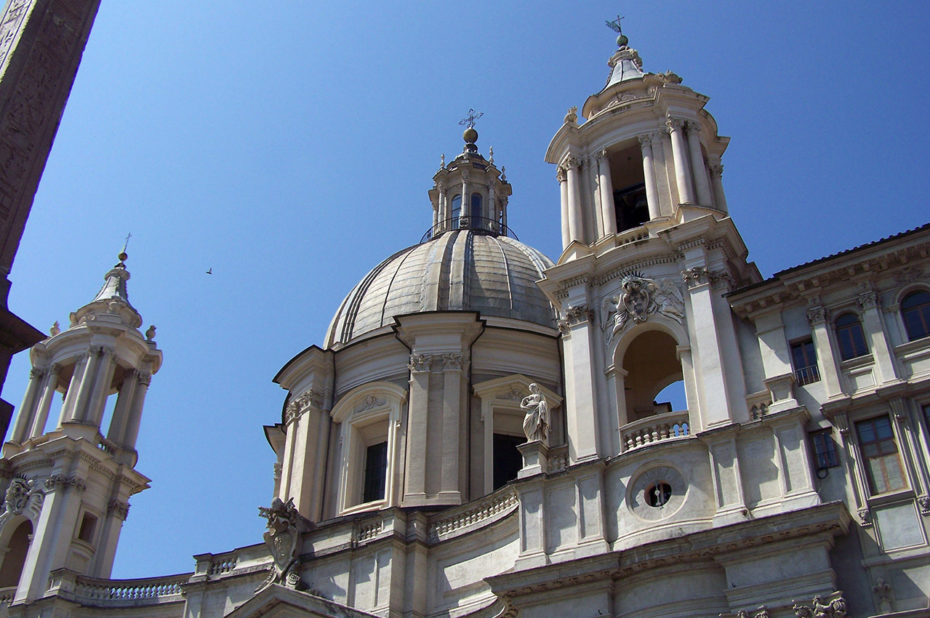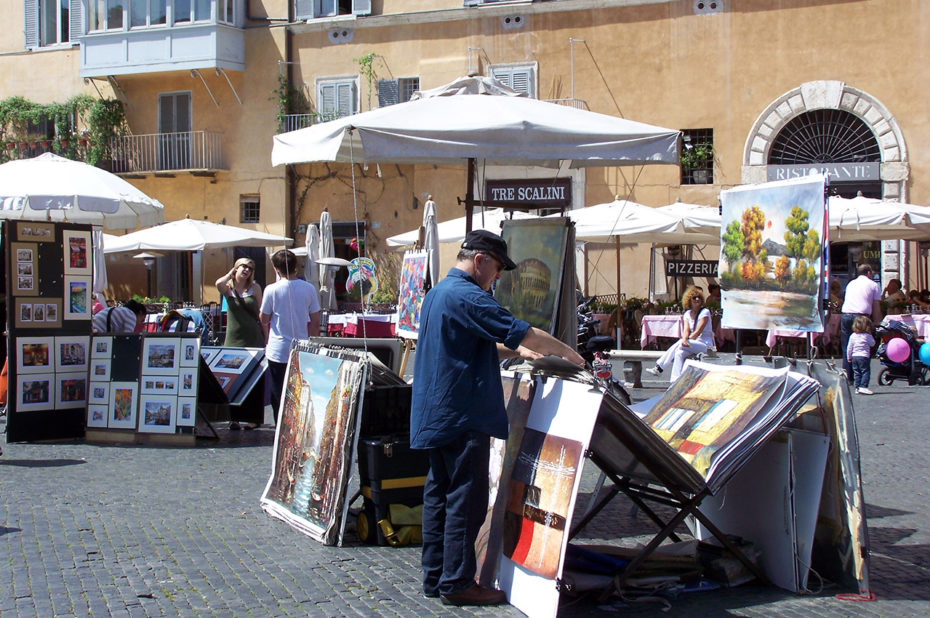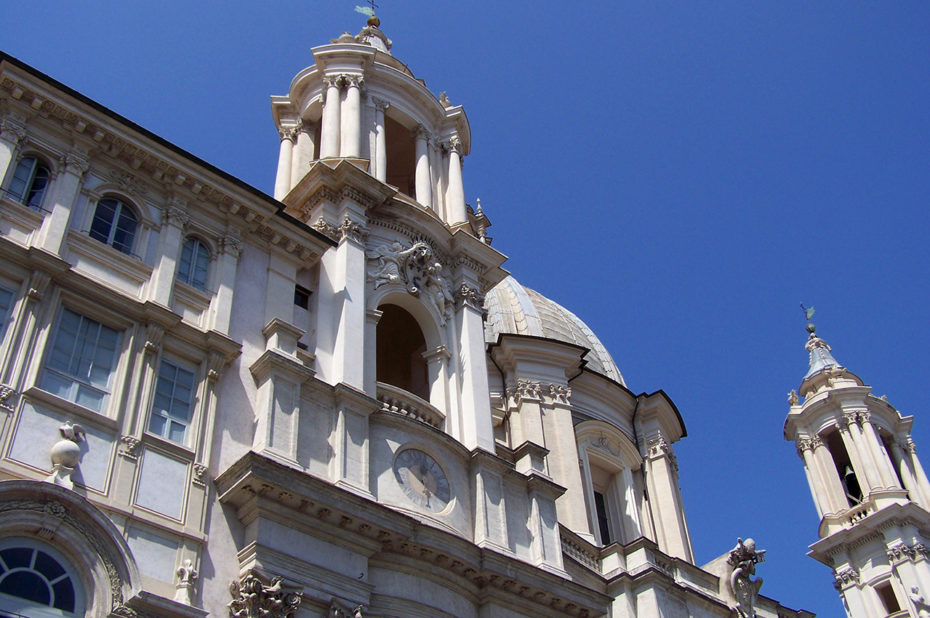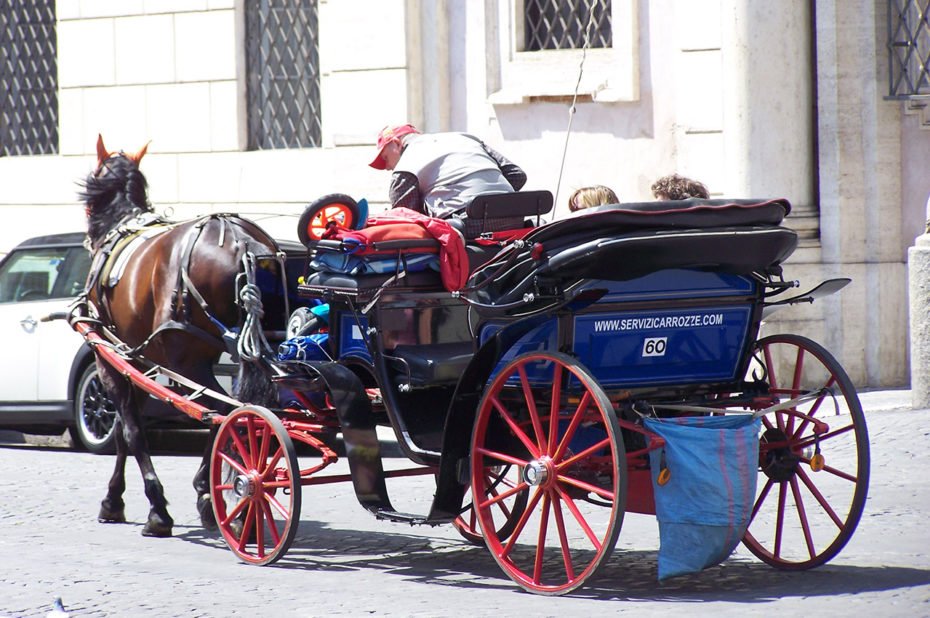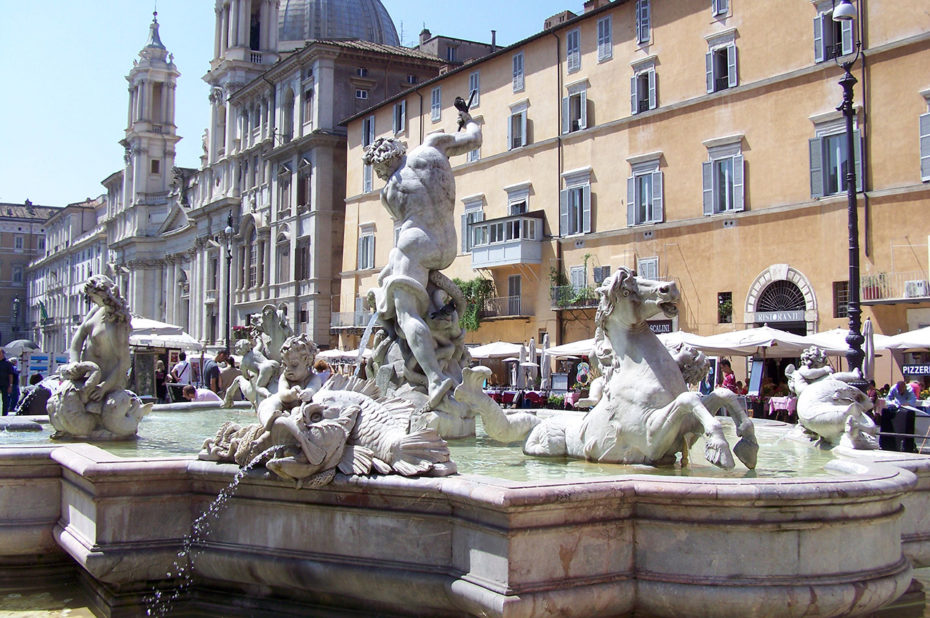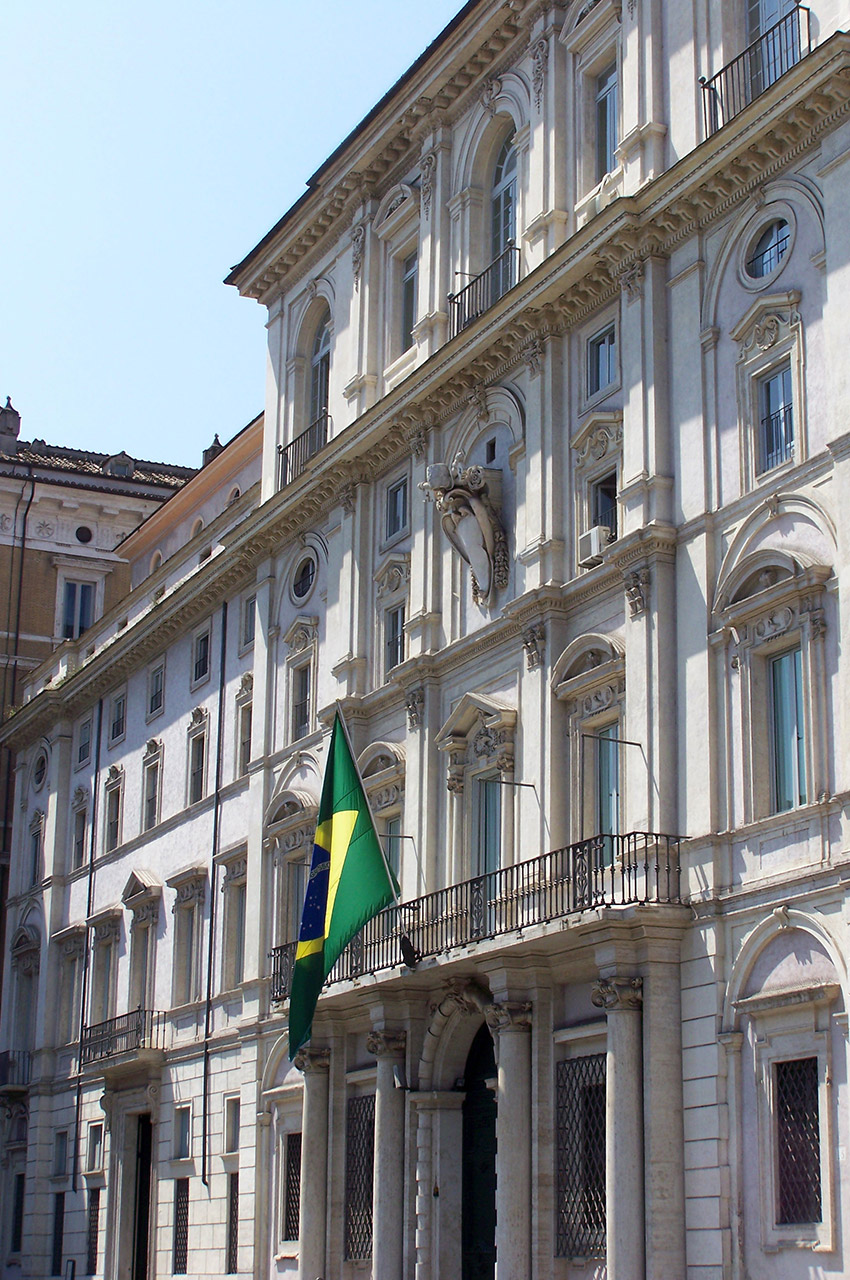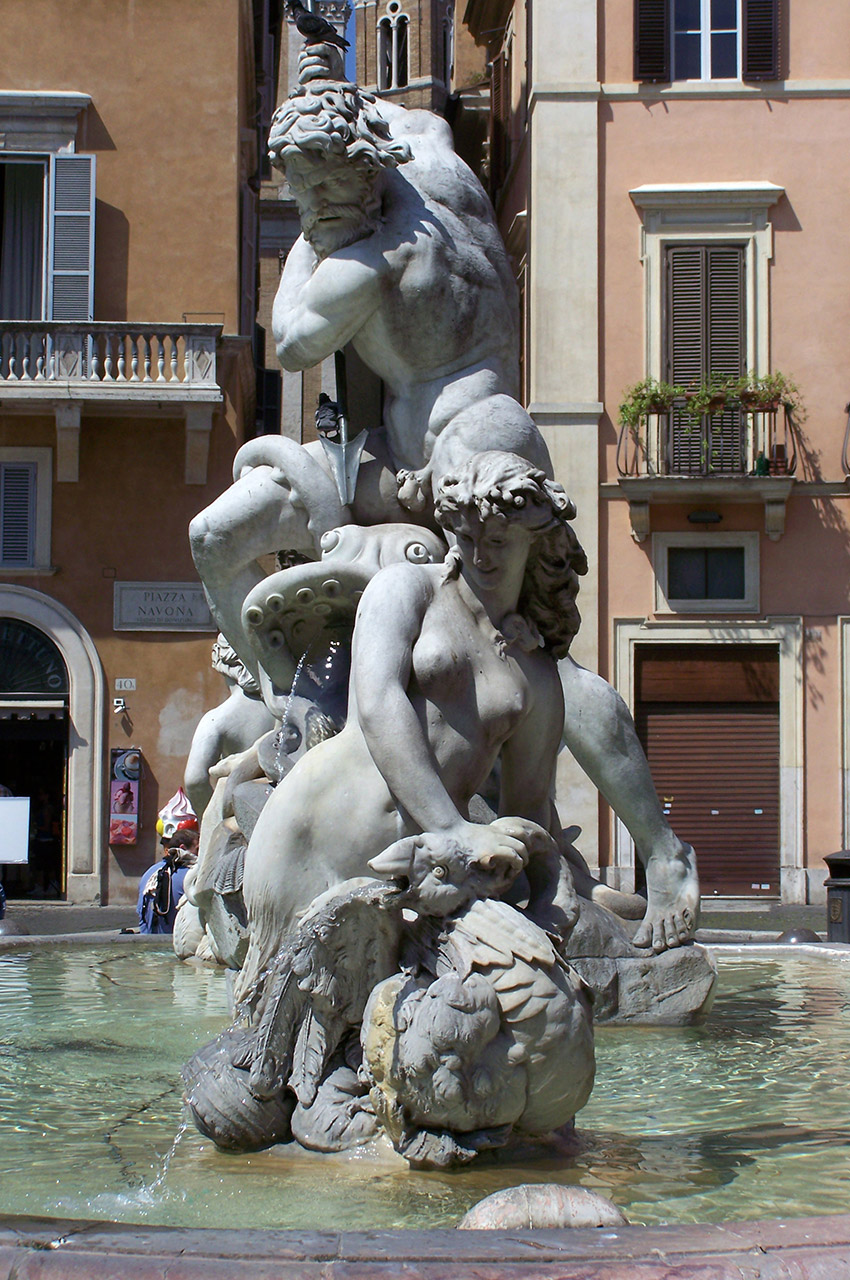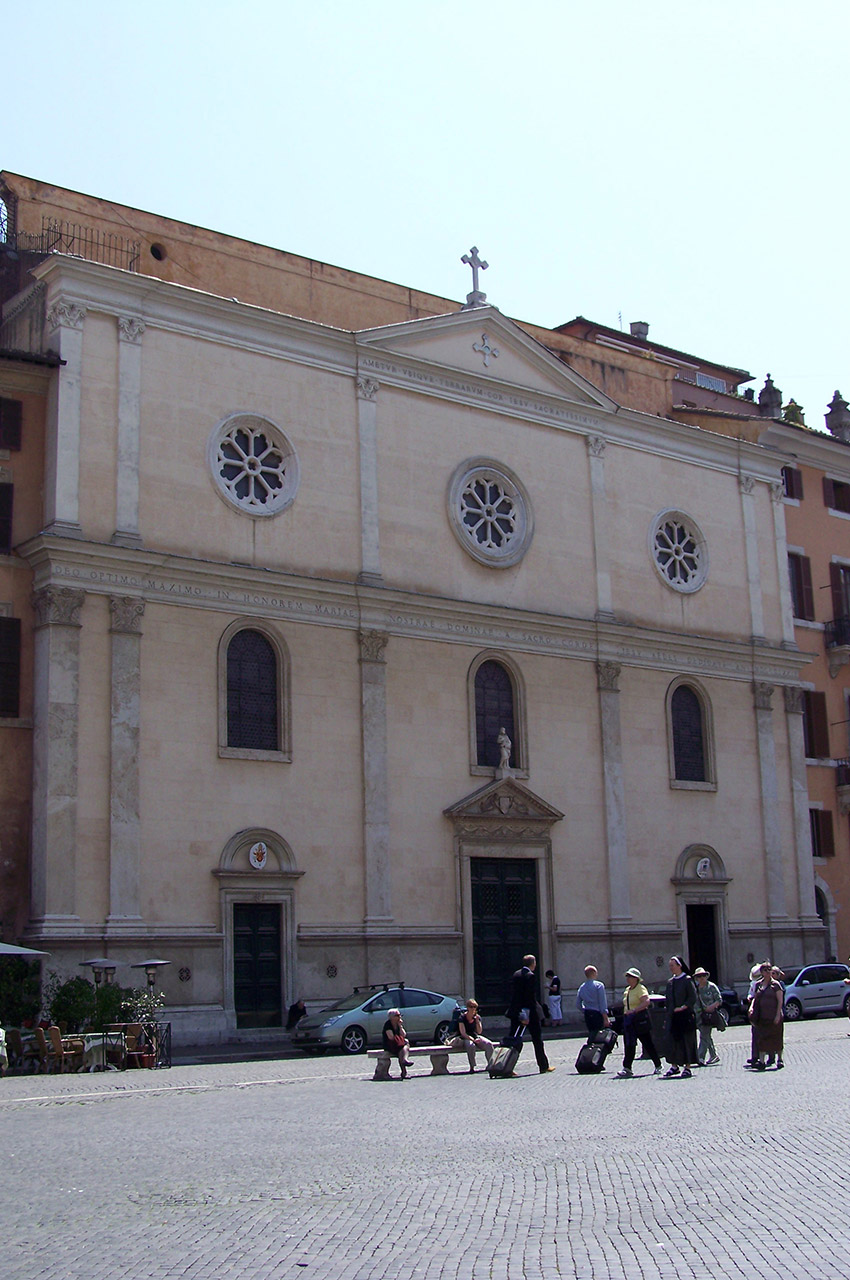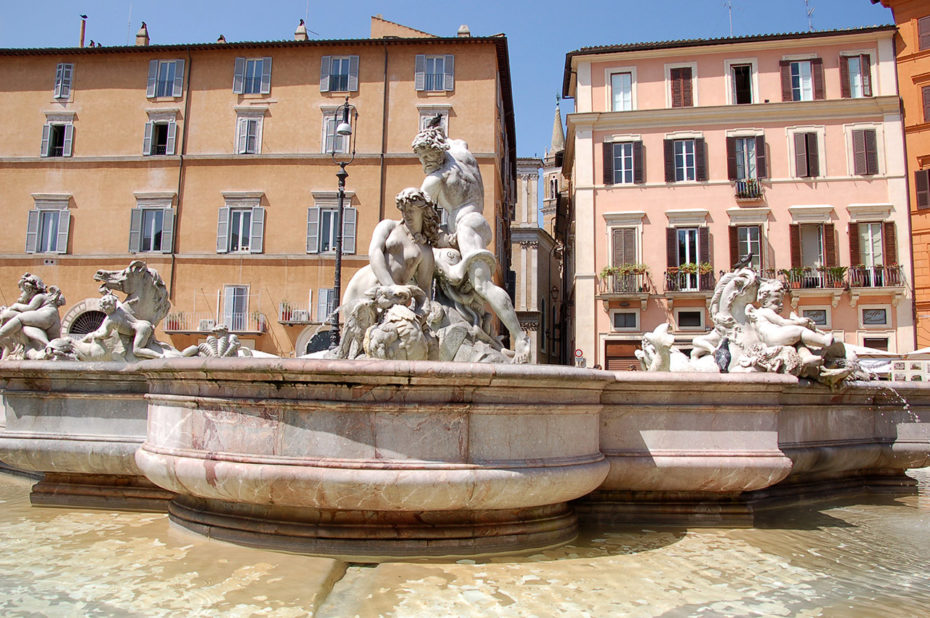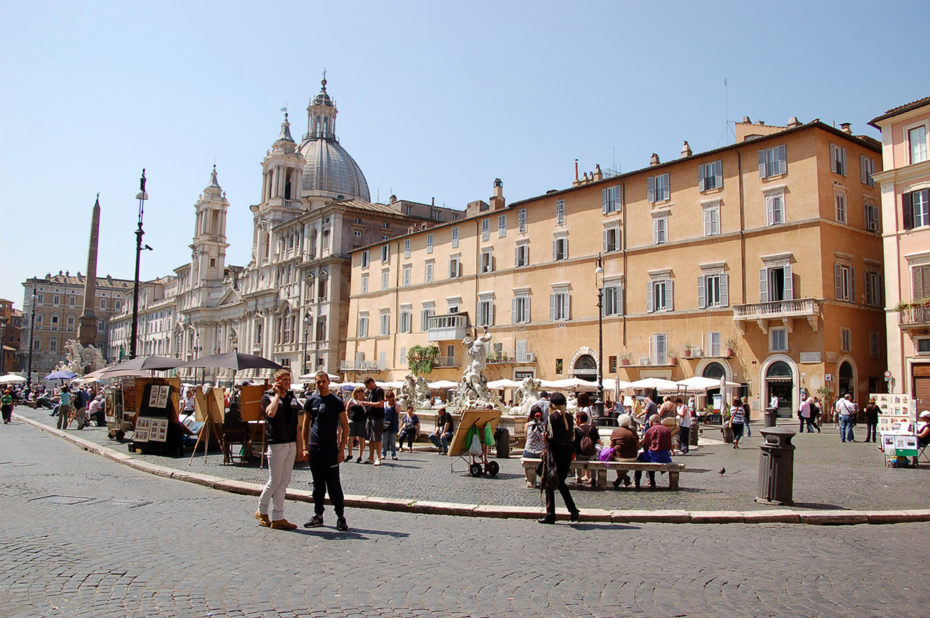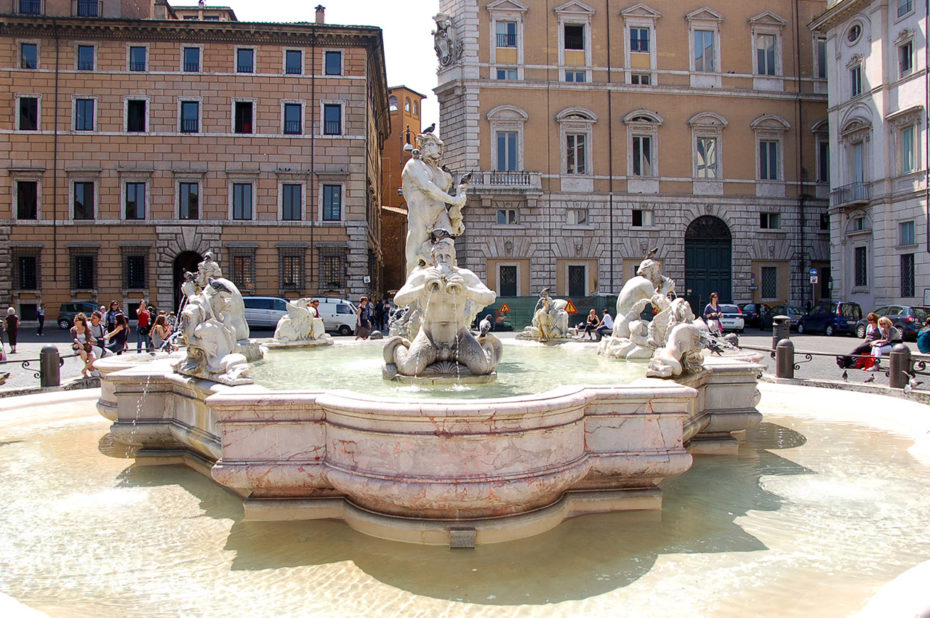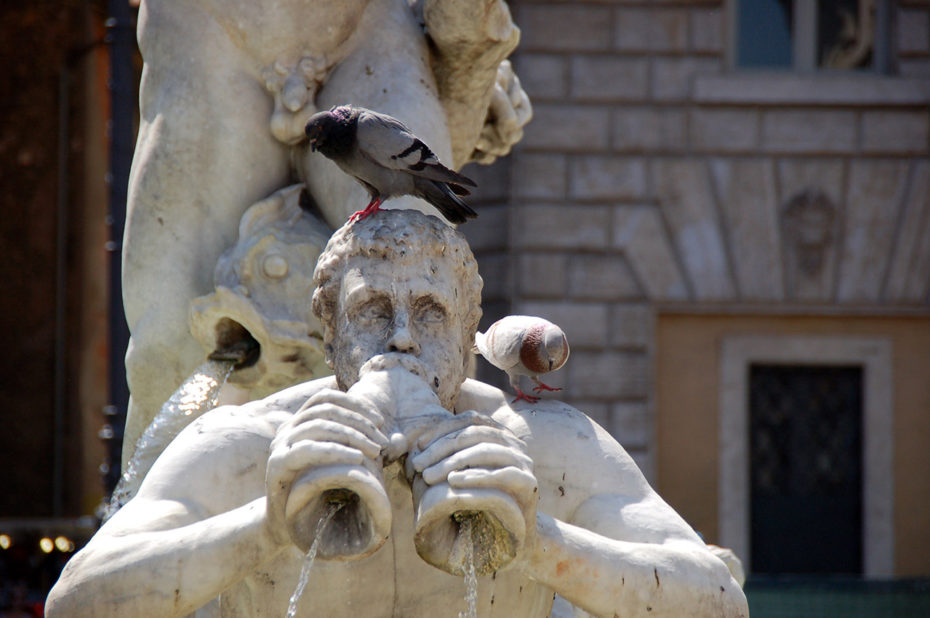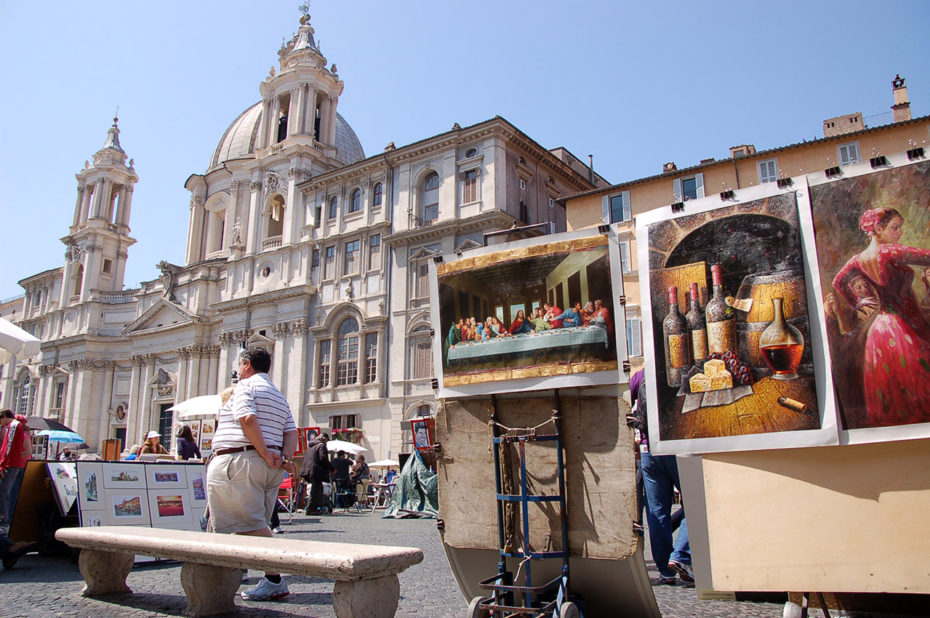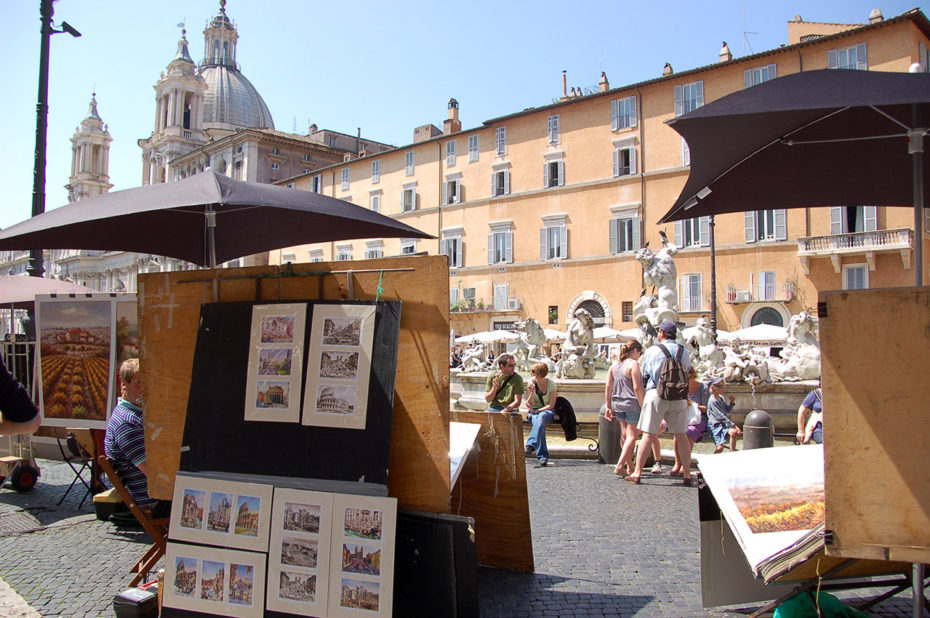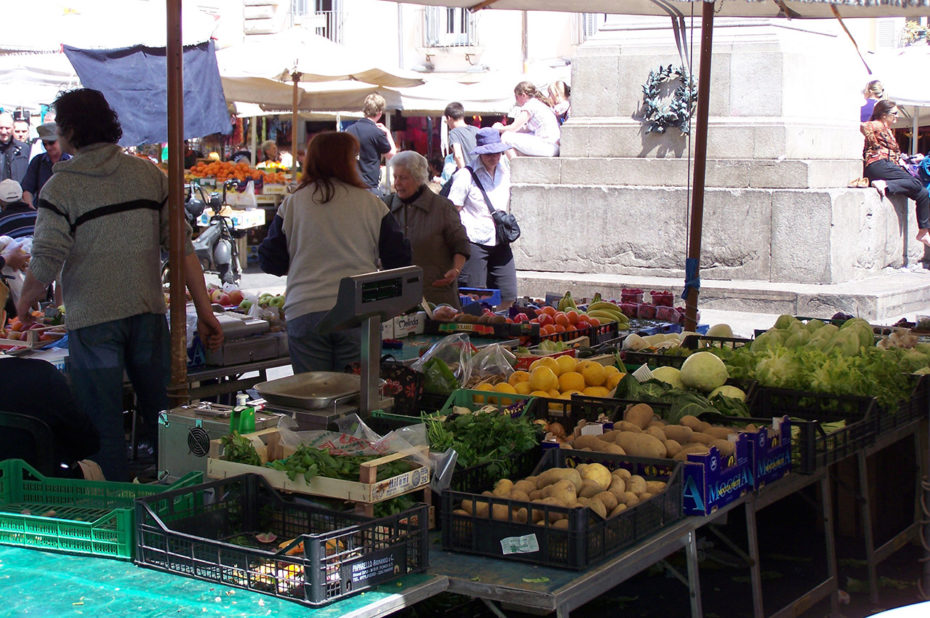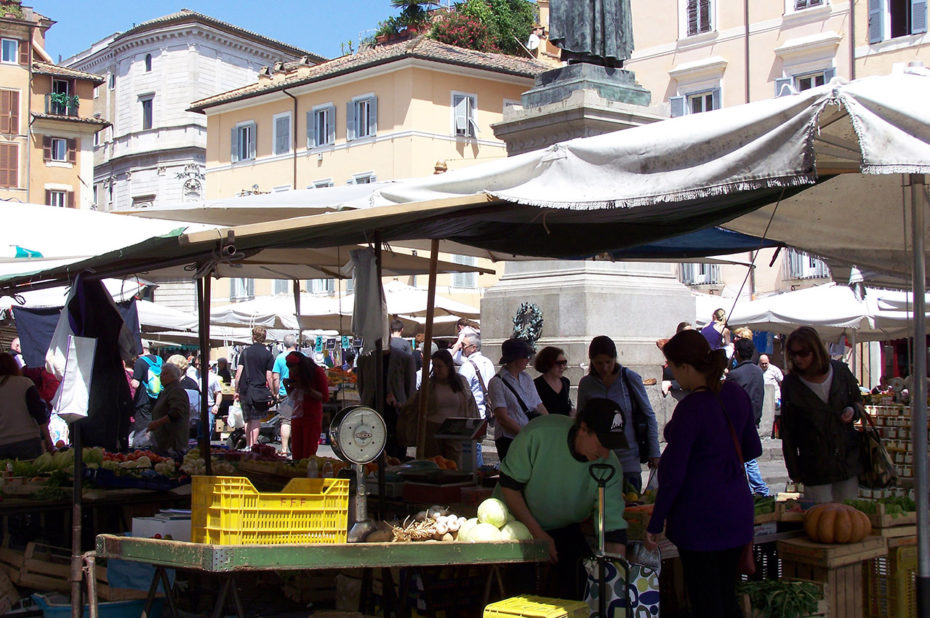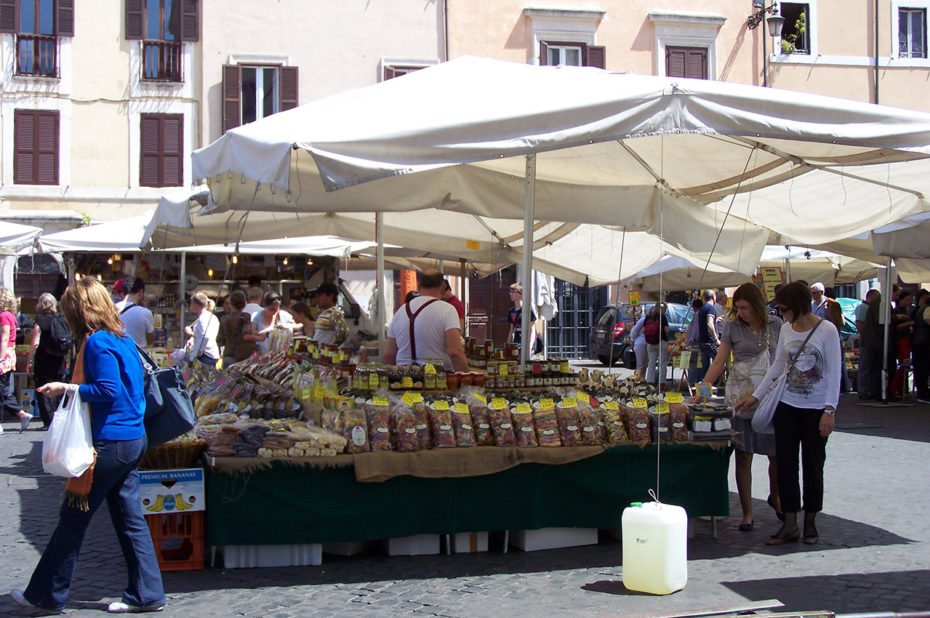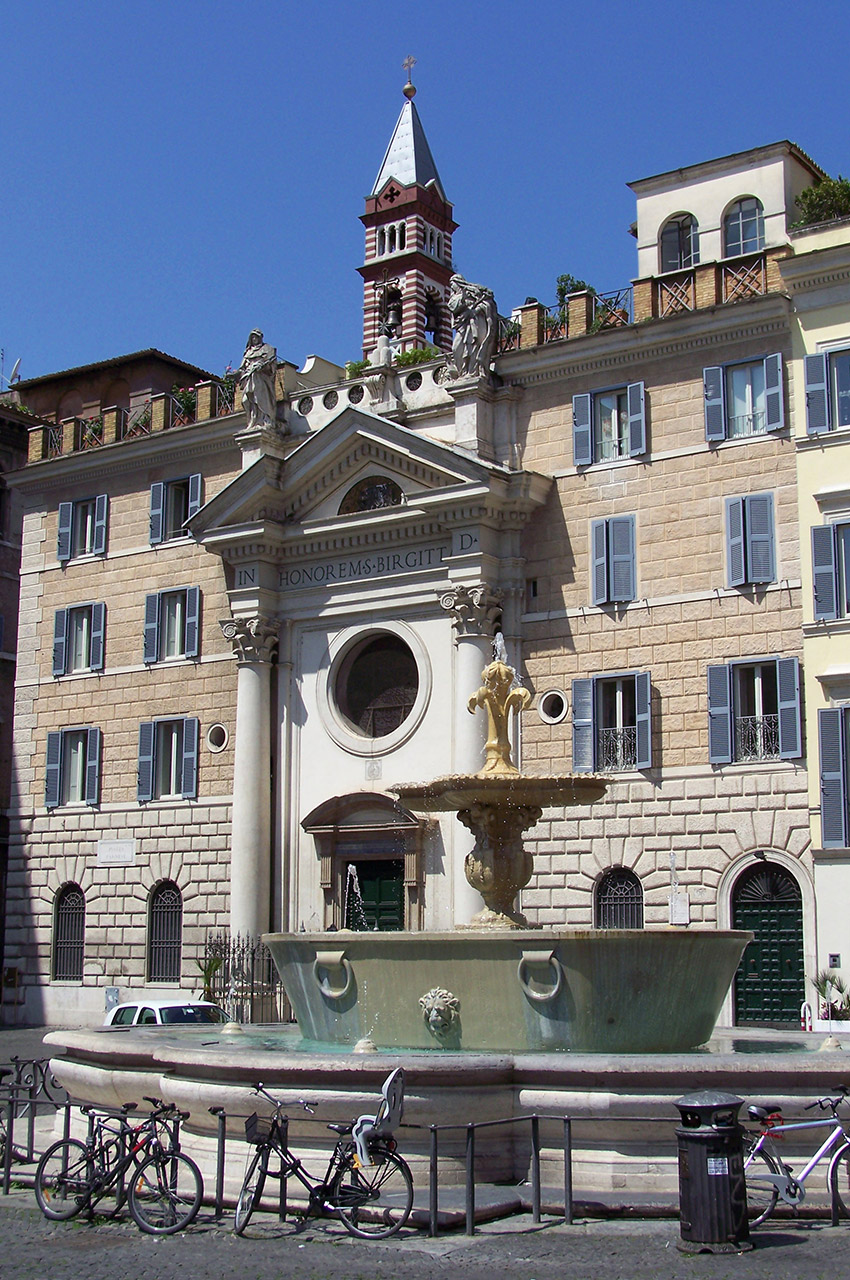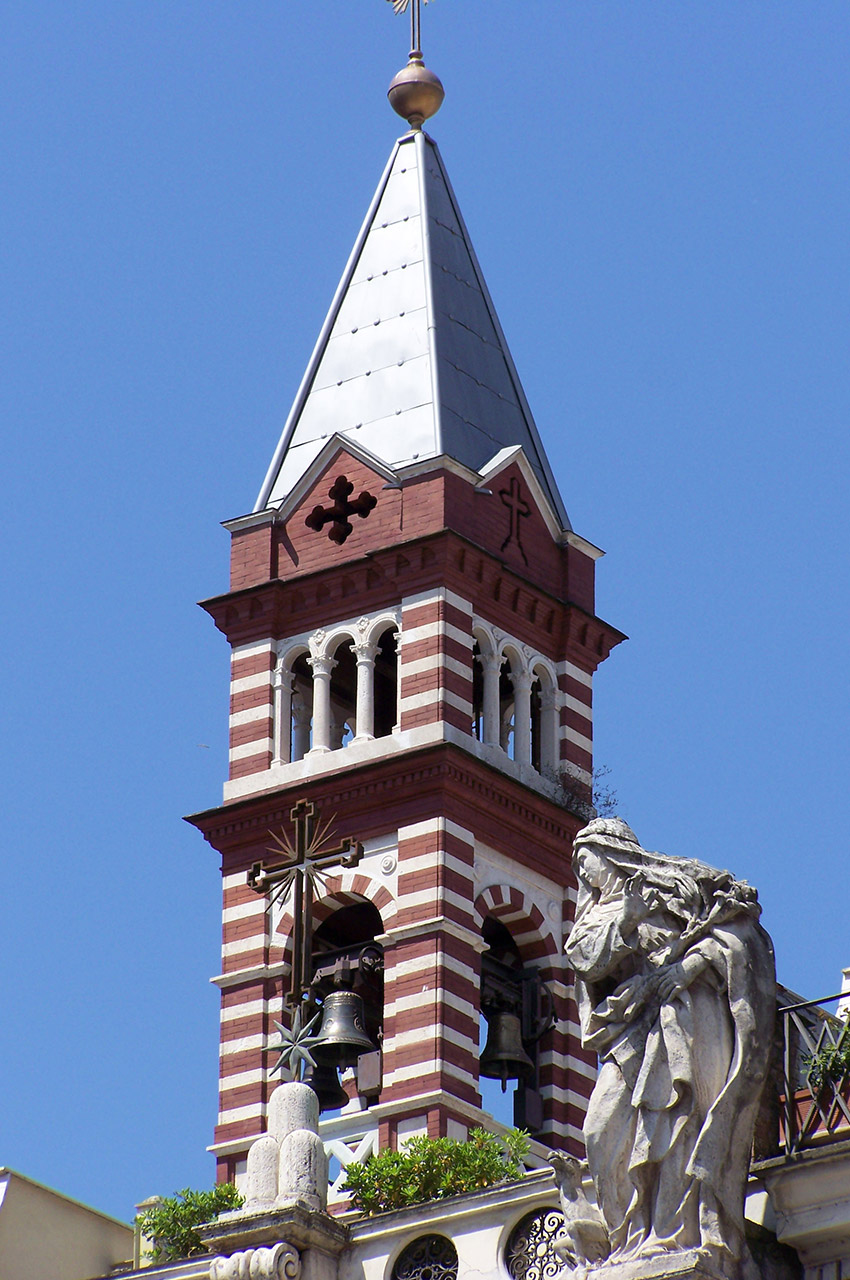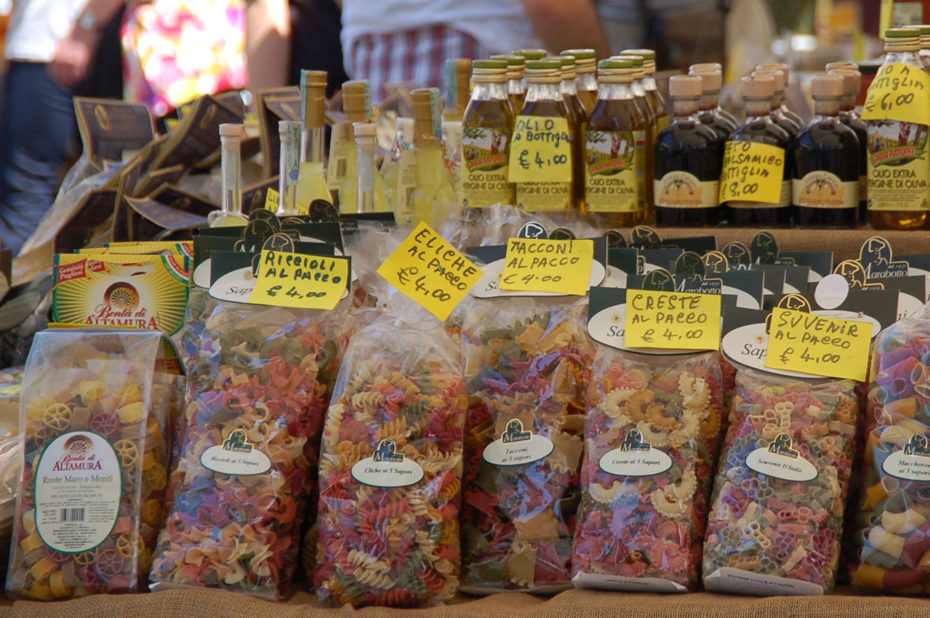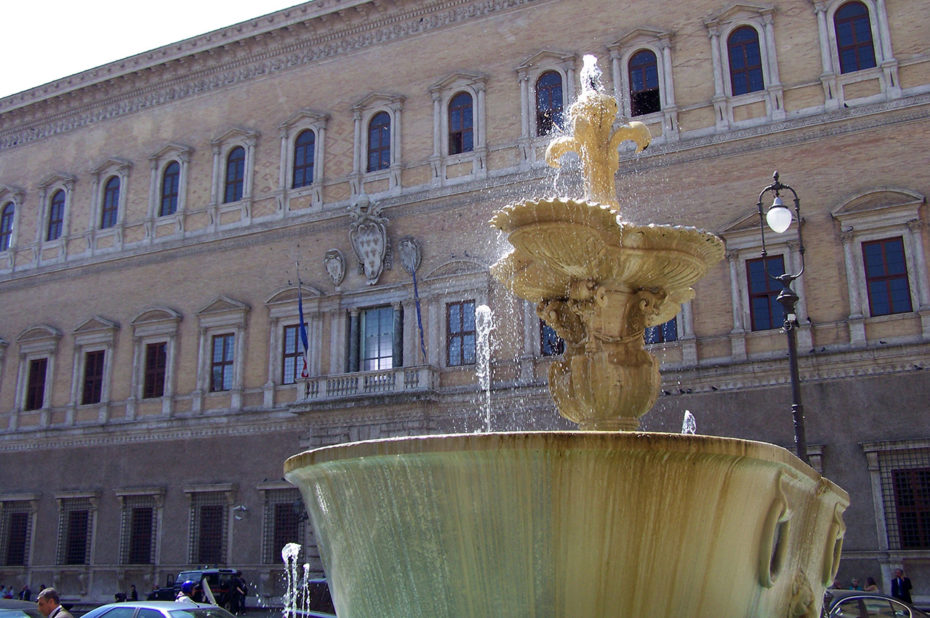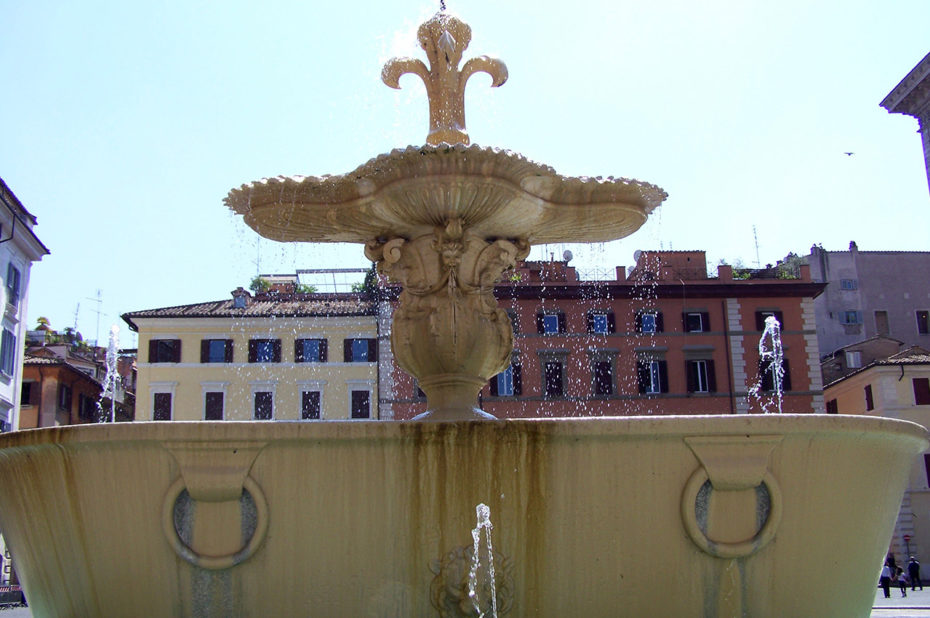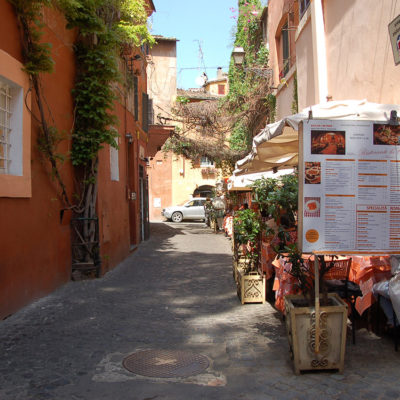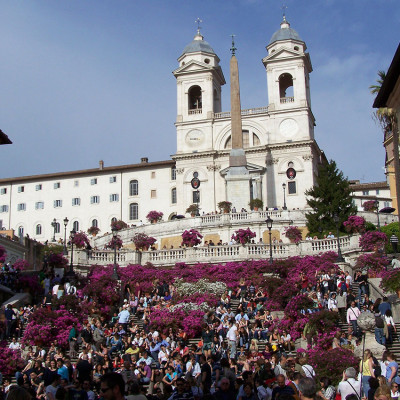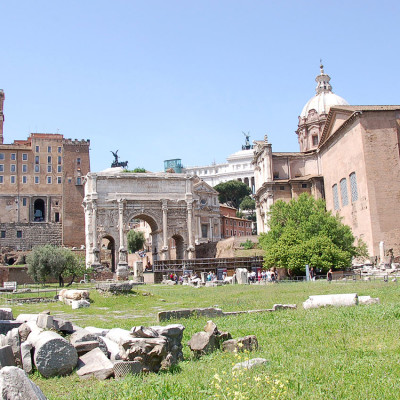
In the heart of the historical center of the city, near the Pantheon, Piazza Navona is the most famous and largest square in Rome. It is about 240 meters long and has kept the shape of Domitian’s stadium (1st century A.D.), the arches of the circus still remaining under the pavement. Piazza Navona continues to be one of the most animated squares in Rome, with its many painters who exhibit their artworks. It was Pope Innocent X who decided to build the colossal central fountain in 1651, the Fountain of the Four Rivers, designed by Bernini. It is formed by four statues representing the Nile, the Ganges, the Danube and the Rio de la Plata. In its center, the obelisk from the circus of Maxentius was raised, but it was originally in the temple of Isis.
Not far from there, another square, the Campo dei Fiori also shines with its liveliness: every day of the week except Sunday is held a fruit and vegetable market; there are also fish merchants and restaurants. Its name come from the fact that in the Middle Ages there was a vast meadow dominated by the fortresses of the powerful Orsini family. In the center of Campo dei Fiori is the statue of Giordano Bruno, which reminds us that this Dominican monk was burned alive here on February 17, 1600.
The visit to Piazza Navona and Campo dei Fiori was made on April 26, 2010.
Click on the picture to enlarge it and discover its caption.
